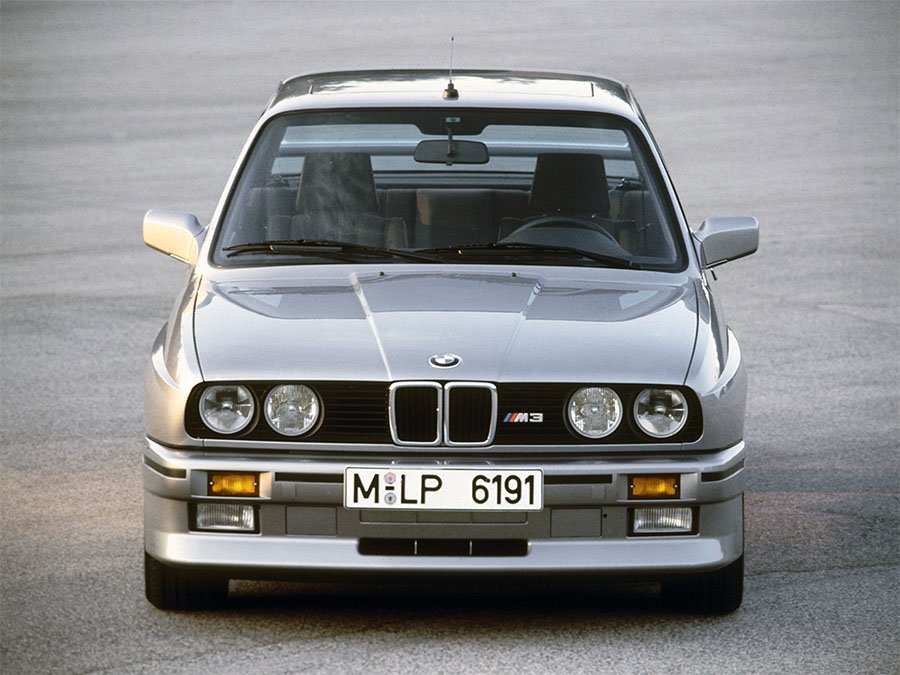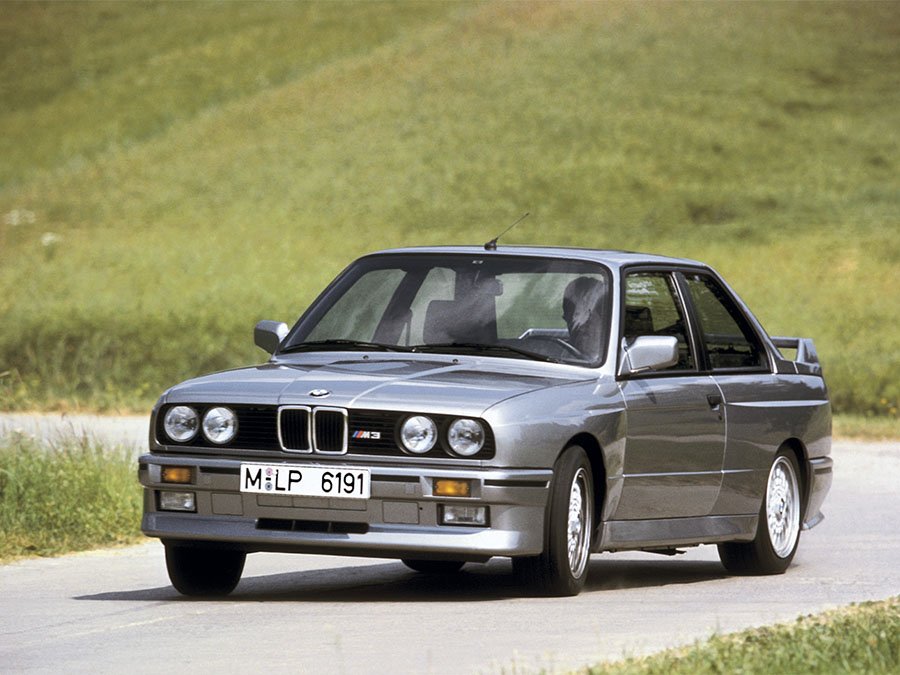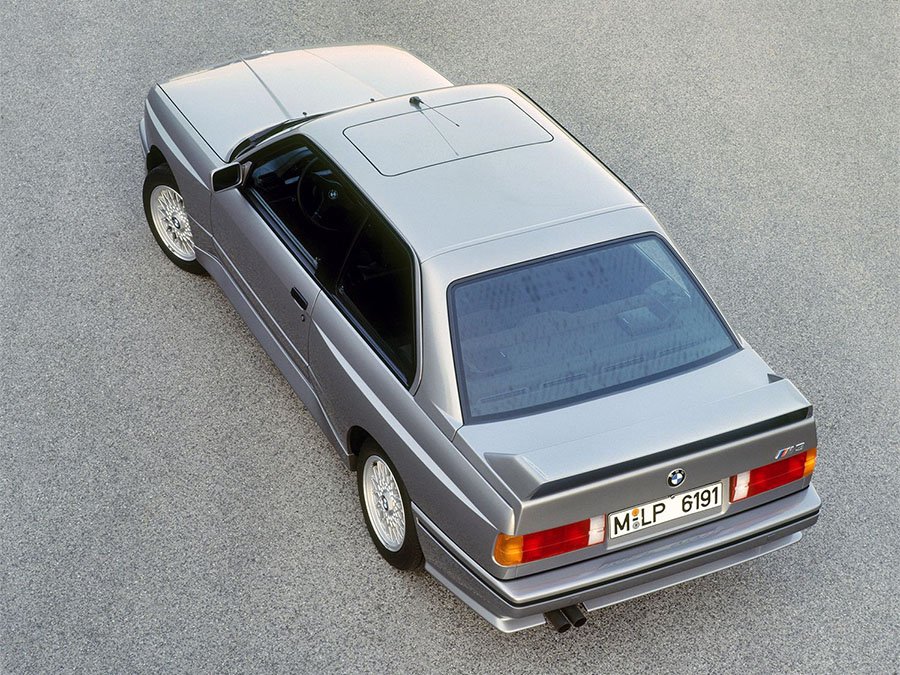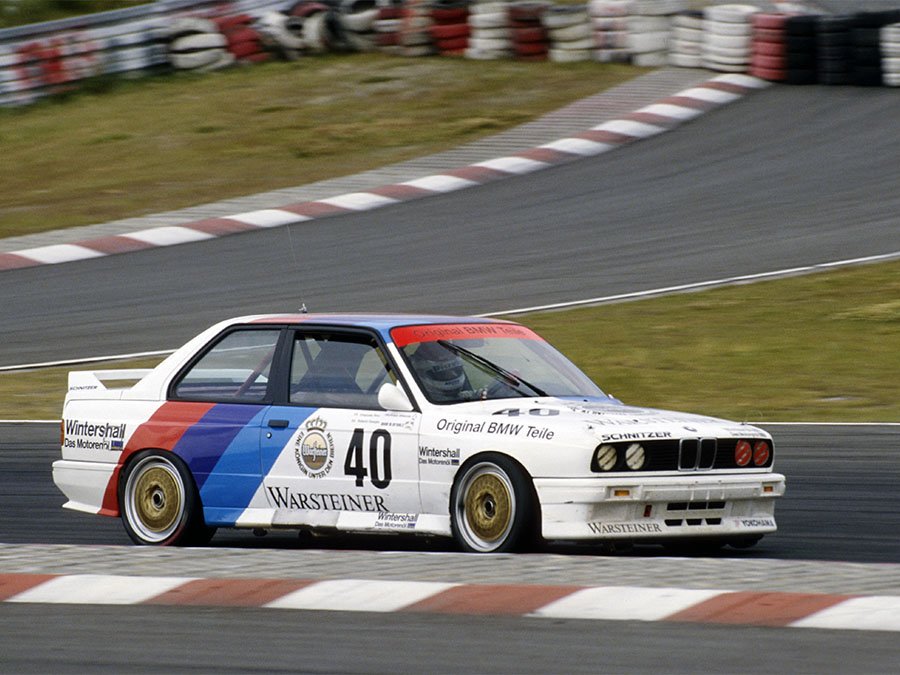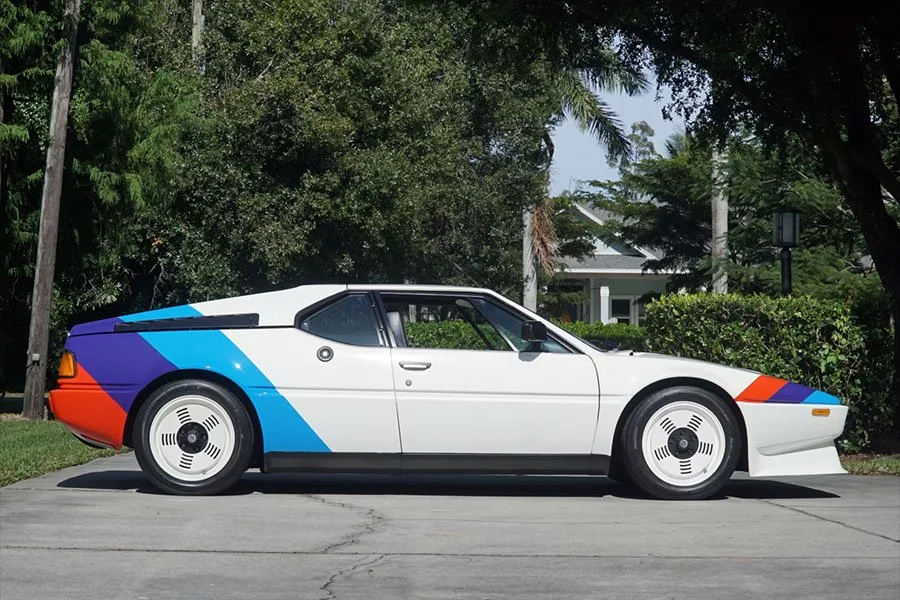Guide: BMW E30 M3 2.3 Evolution 1 - a Historical & Technical Appraisal
/BACKGROUND
BMW Motorsport created the E30-based M3 to compete in the inaugural 1987 World Touring Car Championship (WTCC).
The new model replaced BMW’s 635 CSi as the firm’s touring car of choice; the handsome but ageing 635 had secured an array of titles between 1981 and 1986, most notably the European Touring Car Championship crowns in 1981, 1983 and 1986 (ETCC).
At the time, all major Touring Car championships were run to Group A regulations. To qualify for Group A, a manufacturer had to build at least 5000 road-going examples of the car they wanted to race within a twelve month timeframe.
E30 M3 production began in September 1986 and BMW had hit the 5000 car requirement inside six months. Homologation was approved on March 2nd 1987.
Like the more extreme Group B category, Group A permitted manufacturers to produce further enhanced Evolution variants of their homologated vehicle every twelve months. A first Evolution was allowed as soon as the initial homologation had been granted. To qualify, 500 cars had to be built, once again within a twelve month period.
With this in mind, BMW Motorsport created a lightly modified E30 M3 Evolution 1 in time for a competition version to go racing in 1987.
Production took place between March and April of 1987, immediately after homologation of the base model had been approved.
ENGINE / TRANSMISSION
It was in the engine bay that the Evolution 1 differed from the regular E30 M3.
To enable the Group A competition version to rev higher, the Evolution 1’s Type S14 engine was fitted with a revised cylinder head that was identifiable by an ‘E’ cast into it.
Officially, peak output was unchanged with 200bhp at 6750rpm and 176lb-ft at 4750rpm. However, these motors are known to produce a little more power at the top end, albeit at the expense of some torque.
Otherwise, the Evolution 1’s engine was identical to the Alex von Falkenhausen-designed S14 inline four cylinder engine used in the standard E30 M3.
Created specifically for competition use, the compact and high-revving S14 power unit was a further development of the two-litre M10 motor. It was effectively a combination of the basic cast-iron inline four cylinder M10 block with a shortened four valve light alloy DOHC head derived from the six cylinder M88 and S38 motors.
It featured individual throttle plates for each cylinder plus siamesed pistons, machined intake and exhaust ports and a crankshaft with eight counterparts. An alloy oil cooler was located behind the front spoiler.
Like the M88 and S38 engines, the S14 did not have hydraulic lifters and thus required periodic valve adjustment.
Displacement was 2302cc thanks to a bore and stroke of 93.4mm and 84mm respectively.
The compression ratio was set at 10.5:1 and Bosch Motronic ML fuel-injection was employed.
Transmission was through a Getrag 265 close-ratio five-speed gearbox (with dogleg first), a hydraulic clutch and a limited-slip differential with 25% locking factor.
CHASSIS
Each M3 started life as a standard E30 Coupe pressed steel body shell.
Likewise, the familiar MacPherson strut / semi-trailing arm suspension layout was retained. However, to improve handling, shorter, stiffer springs, gas-pressurised Boge dampers and thicker anti-roll bars were fitted.
A special Bosch ABS system was also installed and the brake discs were bigger than normal: 280mm at the front (ventilated) and 282mm at the rear (solid). Reinforced single piston calipers were sourced from the E28 5-series along with stub axles and wheel bearings.
7 x 15-inch BBS cross-spoke alloy wheels were originally shod with Continental tyres.
A power-assisted quick ratio steering rack was unique to the M3.
A 70-litre fuel tank was installed under the rear seats.
BODYWORK
Externally, the Evolution 1 was identical to other M3s of the period.
Apart from the hood, these cars shared no other panels with the regular E30.
They came with flared fenders, a re-profiled rear windscreen, a raised trunk lid and an enormous rear spoiler. Other M3-specific features included a deep front spoiler, extended side sills and special bumpers.
These M3-specific body parts were all fabricated from SMC composite. To improve rigidity, both the front and rear windscreens were bonded in place.
Compared to the standard E30 Coupe (which had a drag coefficient of 0.38), the M3 registered an appreciably lower 0.33.
Each M3 also came with a roof-mounted radio antenna, blacked out Shadowline trim and M3 badges on the front grille and tailgate.
INTERIOR
Like the exterior, there was nothing inside of the Evolution 1 to differentiate it from any other E30 M3.
Manually adjustable Recaro sports seats were upholstered with houndstooth check cloth centres, plain grey fabric bolsters and grey PVC backs.
Rear seats were individually contoured.
The standard E30 dash and instrument binnacle was imported, albeit with new red needled VDO instruments to include a special 160mph (260kmh) speedometer and 8000rpm tachometer. These two large dials were split by a BMW Motorsport logo and an oil temperature gauge which replaced the economy meter that was fitted to the rest of the E30 range.
A special three-spoke leather-rimmed M-Tec I steering wheel was also standard along with a Motorsport-branded gear lever, tinted glass and electric door mirrors.
Although the E30 M3 was a very expensive car when new, it was typical of many German cars of this era in that the basic specification was quite low.
OPTIONS
Customers could enhance their car with a range of optional extras to include air-conditioning, electric windows, an electric sunroof, leather upholstery, an on-board computer, cruise control, heated front seats, metallic paint, headlight wash/wipe, rear head rests, velour floor mats and a choice of audio systems.
WEIGHT / PERFORMANCE
Weight of the Evolution 1 was officially unchanged at 1165kg (44kg lighter than a top-of-the-range 325i Coupe).
BMW quoted a top speed of 146mph and 0-62mph time of 6.5 seconds.
E30 M3 EVOLUTION 1 TOUR DE CORSE
To celebrate the M3’s victory at the 1987 Tour de Corse (round five of that year’s World Rally Championship), BMW France commissioned a batch of 50 Evolution 1 special editions.
Dubbed Evolution 1 Tour de Corse, these cars were supplied exclusively to the French market with black leather upholstery, an electric sunroof, electric windows, headlight wash / wipe, interior headlight adjustment, an on-board computer and velour floor mats.
A choice of two paint colours was offered: Alpine White or Diamond Black Metallic.
Upon delivery to Strasbourg, BMW France further uprated each car with 7.5 x 16-inch cross-spoke alloy wheels, a Motorsport footrest, M3-branded sill plates, Motorsport-coloured seat labels and special Tour de Corse badges (one in place of the standard M3 badge on the front grille and another on the left-hand side of the trunk lid).
Inside, BMW France added a numbered plaque on the centre console that bore the signature of driver, Bernard Beguin, and his navigator, Jean-Jacques Lenne.
Piloting their Prodrive-built and Rothmans-backed M3, Beguin and Lenne went on to finish second in the 1987 French Rally Championship.
END OF PRODUCTION
Evolution 1 production took place between March and May of 1987.
In total, 505 were built, all of which were left-hand drive.
An Evolution 2 followed in March 1988.
1987 SEASON
In competition, the Evolution 1 had an impressive 1987 season.
Despite running in the Division 2 category for cars with engines of less than 2.5-litres, the M3 went on to have an extremely successful debut campaign even though its principal rival, the Ford Sierra Cosworth, ran an engine with a swept volume of nearly 2.8-litres when the 1.4 multiplier for turbocharged engines was taken into account.
The M3 won four out of eleven races outright in the inaugural World Touring Car Championship and took Division 2 honours on all but one occasion (when they were excluded from the opening race of the year at Monza). Schnitzer driver Roberto Ravaglia was crowned 1987 Driver’s Champion, but Ford team Eggenberger Motorsport claimed that year’s Entrant’s title.
In the 1987 European Touring Car Championship, the M3 won six of seven races outright and took a clean sweep of the Division 2 honours. Linder Rennsport driver Winfried Vogt took the 1987 Driver’s title and BMW were crowned Manufacturer’s champions.
Zakspeed BMW Junior Team member Eric van de Poele was the 1987 DTM champion as the M3 won five out of the ten races that year.
Elsewhere, domestic titles were scooped in Italy, Japan and Australia.
Text copyright: Supercar Nostalgia
Photo copyright: BMW - https://www.bmw.com
